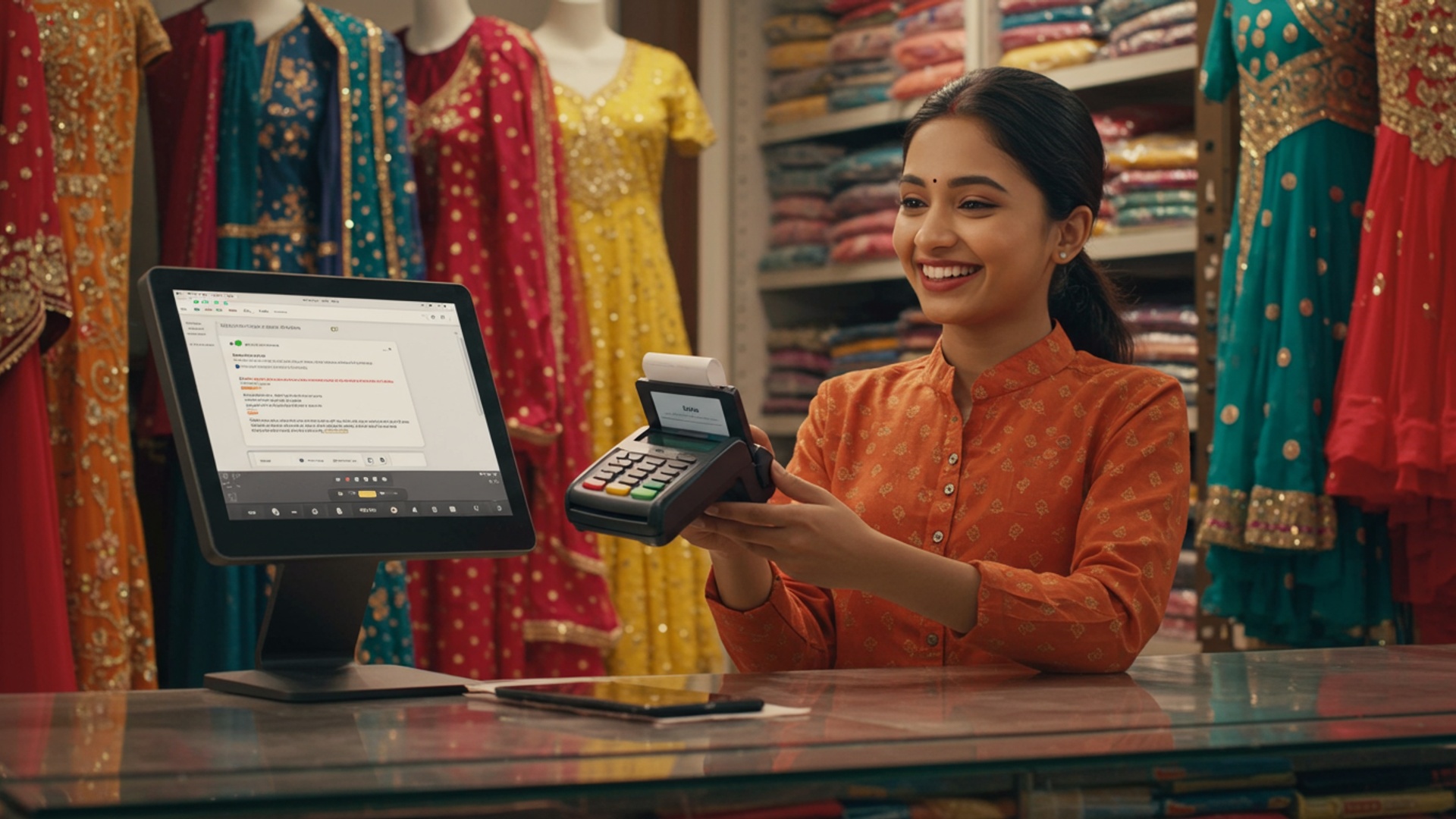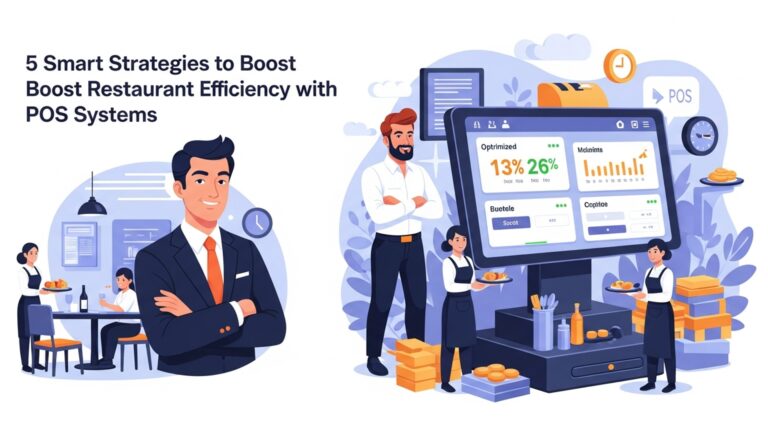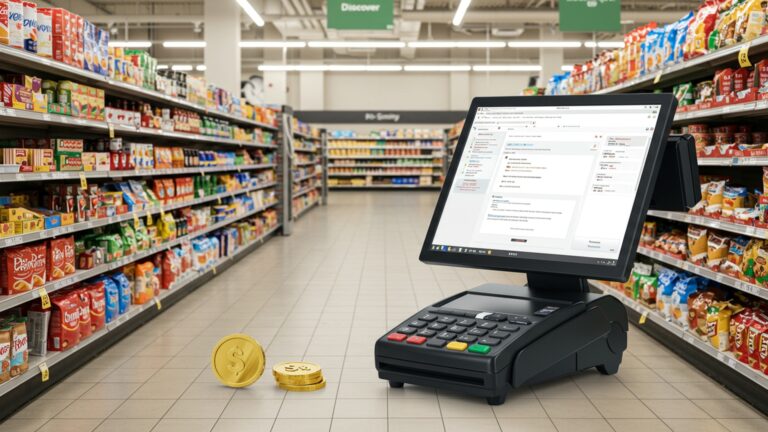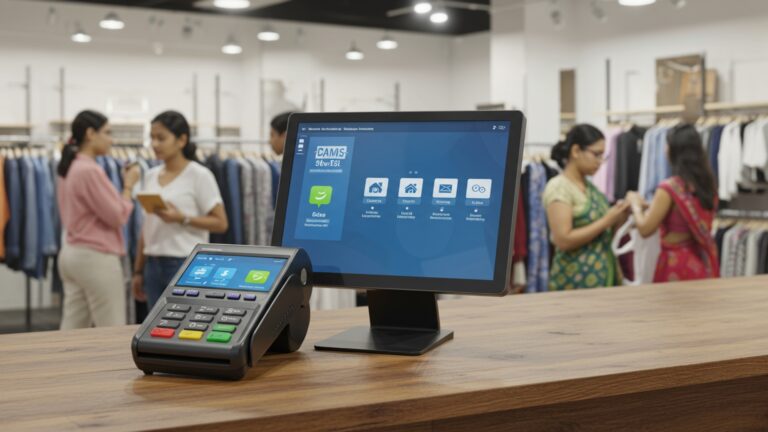7 Essential Tips to Master Clothing POS Offline Mode in India
Imagine a bustling boutique in a vibrant Indian market, sales soaring during a festive rush, only for an unexpected internet glitch to threaten every impending transaction. In India’s dynamic retail landscape, where connectivity can fluctuate even in metropolitan areas, mastering ‘clothing POS offline mode India’ isn’t merely a contingency; it’s a strategic imperative for uninterrupted revenue and sustained customer trust. Modern fashion retailers, from burgeoning start-ups in tier-2 cities to established chains, grasp that the ability to process seamless sales, capture critical inventory data. manage customer loyalty programs without a live internet connection directly impacts their bottom line and operational resilience, especially during high-volume periods or pop-up events.

Understanding the Imperative of Offline Mode for Clothing Retail in India
In the dynamic and often unpredictable retail landscape of India, ensuring uninterrupted sales operations is paramount for any clothing business. This is where mastering clothing POS offline mode India becomes not just an advantage. a critical necessity. Offline mode refers to the capability of your Point-of-Sale (POS) system to continue processing transactions, managing inventory. recording sales data even when there is no internet connectivity. For a clothing store, this means that even if the Wi-Fi goes down or the broadband connection is interrupted – a common occurrence in many parts of India due to infrastructure variations, power outages, or even temporary service disruptions – your business doesn’t grind to a halt.
Consider a busy festive season sale in a bustling market or a boutique in a picturesque, yet connectivity-challenged, hill station. Relying solely on an internet-dependent POS system in such scenarios can lead to lost sales, frustrated customers. a damaged brand reputation. A robust offline mode ensures that your cashiers can continue ringing up sales, accepting payments (especially cash and card machines that don’t require constant internet for basic processing, though final authorization might be delayed). updating inventory counts locally. Once connectivity is restored, all the accumulated offline data seamlessly synchronizes with the central cloud system, ensuring accuracy and consistency across your entire retail operation.
From a practical standpoint, the ability to operate independently of the internet provides a crucial layer of resilience. It allows clothing retailers to maintain productivity, minimize downtime. deliver a consistent customer experience, irrespective of external network conditions. This foundational understanding is the first step towards truly mastering your clothing POS offline mode in India.
Selecting a Robust POS System with Superior Offline Capabilities
The core of mastering clothing POS offline mode India lies in choosing the right system. Not all POS solutions are created equal when it comes to their offline functionality. When evaluating options, clothing retailers must look beyond the basic features and dive deep into how well a system performs without an internet connection. Key features to prioritize include local data storage, automatic synchronization. a user-friendly interface that doesn’t change drastically when switching modes.
- Local Data Storage
- Automatic Synchronization
- Intuitive User Interface
The system must have a robust local database that can store all critical transaction data, inventory updates, customer insights. even loyalty points accumulated during offline periods. This data should be encrypted for security.
A truly effective offline POS will automatically detect when internet connectivity is restored and initiate the synchronization process without manual intervention. It should also have smart conflict resolution to handle discrepancies if, for example, an item was sold online and offline concurrently.
The transition between online and offline modes should be imperceptible to the user. The interface and workflow for processing sales, returns. exchanges should remain consistent, reducing the learning curve and potential for errors.
Let’s consider a comparison of typical POS system capabilities regarding offline mode:
| Feature | Basic POS (Weak Offline) | Advanced POS (Strong Offline) |
|---|---|---|
| Transaction Processing | Limited to cash/manual entry, often requires internet for card processing. | Full sales, returns, exchanges, discounts; local processing for all payment types (syncs authorization later). |
| Inventory Management | No real-time updates, only basic stock check. | Local inventory updates, stock counts, item lookups. basic transfers, all reflected locally. |
| Customer Data Access | No access to customer profiles or loyalty points. | Access to local customer profiles, ability to add new customers, apply loyalty points locally. |
| Data Synchronization | Manual upload required, prone to errors, no conflict resolution. | Automatic, intelligent synchronization with conflict resolution, background uploads. |
| Hardware Compatibility | Often requires internet for peripherals like barcode scanners or printers. | Designed to operate peripherals locally, robust drivers for offline use. |
A real-world example: A clothing boutique in Bengaluru experienced frequent short internet outages. Initially, they used a basic POS that would halt operations, leading to long queues and frustrated customers. After switching to an advanced POS system specifically designed for robust offline functionality, they found that sales continued seamlessly. The system stored all transactions locally and automatically pushed them to the cloud the moment the internet connection stabilized, preventing data loss and maintaining business continuity.
Implementing Seamless Data Synchronization Protocols
Effective data synchronization is the backbone of a successful clothing POS offline mode India strategy. It’s the process by which data recorded locally during offline operations is accurately and efficiently merged with the central cloud database once internet connectivity is restored. Without proper protocols, this can lead to data discrepancies, inventory errors. accounting nightmares.
Here are key protocols and best practices for seamless synchronization:
- Automated & Scheduled Syncs
- Manual Override Option
- Conflict Resolution Mechanisms
Your POS system should offer automated synchronization that runs in the background at predetermined intervals or immediately upon detecting an internet connection. This minimizes human error and ensures timely updates.
While automation is key, there should always be an option for a manager to manually trigger a synchronization, especially during critical periods or after an extended outage to ensure all data is pushed immediately.
What happens if an item is sold offline and simultaneously adjusted for inventory online? Your POS system must have intelligent conflict resolution. This might involve timestamp-based priority (the latest change wins), or flagging conflicts for manual review. For instance, if
SKU-CLOTH-001
shows 10 units offline and 9 units online after a sale, the system should reconcile to 9 units or flag for review if an online adjustment also occurred.
Synchronization should be designed to be efficient, using minimal bandwidth to avoid slowing down other online operations once connectivity is back. This often involves sending only changed data rather than the entire database.
The system should log any synchronization errors and notify relevant personnel (e. g. , store manager, IT support) so issues can be addressed promptly. This is crucial for maintaining data integrity for your clothing POS offline mode in India.
As an actionable takeaway, establish clear internal procedures for your staff. For instance, after an internet outage, the first step should always be to ensure the POS system has successfully synchronized all pending transactions. Regular checks of synchronization logs can help identify potential issues before they escalate.
Investing in Reliable Hardware for Uninterrupted Offline Operations
While software forms the brain of your clothing POS offline mode India, reliable hardware constitutes its sturdy body. Even the most sophisticated offline software will falter if the underlying hardware is prone to failures, especially during critical moments of lost connectivity. For clothing retailers, robust hardware ensures that sales can continue. data can be processed and stored locally without interruption.
Consider the essential hardware components:
- POS Terminal/Tablet
- Receipt Printer
- Barcode Scanner
- Cash Drawer
- Uninterruptible Power Supply (UPS)
This is your primary workstation. It should have sufficient local storage (SSD recommended for speed and durability), a reliable processor. importantly, a good battery backup. Many modern POS tablets or all-in-one terminals come with integrated batteries that can sustain operations for several hours during a power cut, which is vital in India.
Often overlooked, a receipt printer that can function offline is crucial. Look for thermal printers that connect via USB or local Ethernet (if the local network is still functional) and have their own power supply or can be powered by the POS terminal. Battery-powered portable printers are excellent for flexibility.
Most barcode scanners are plug-and-play USB devices that work locally without an internet connection. But, ensure their drivers are stable on your chosen POS terminal. Wireless scanners (Bluetooth) are also an option, provided they pair reliably with the terminal.
A standard cash drawer is typically triggered by the receipt printer and functions mechanically, so internet connectivity isn’t usually an issue here. But, ensure it’s robust and securely integrated into your setup.
For your main POS terminal, router (if you have a local network). other critical devices, a UPS is a non-negotiable investment. It provides surge protection and temporary power during outages, giving you time to complete transactions and properly shut down systems.
A popular saree store in Chennai heavily relied on its POS system. During a monsoon-induced power outage, their internet went down. crucially, their receipt printer stopped working because it was network-dependent and lacked a local power source. Despite the POS terminal running on battery, they couldn’t issue receipts, leading to customer dissatisfaction and a halt in sales. This highlights the importance of ensuring all critical peripherals can function independently during offline periods. Investing in a reliable, locally operable receipt printer and a robust UPS would have prevented this scenario.
When procuring hardware, always ask vendors about their solutions for maintaining functionality during internet and power outages. Prioritize durability, local connectivity options. integrated battery solutions for crucial components.
Comprehensive Staff Training for Offline Mode Proficiency
Even with the most advanced clothing POS offline mode India system and robust hardware, its effectiveness hinges on the proficiency of your staff. Inadequate training can lead to confusion, errors. a breakdown of operations during an internet outage, negating all the technological investments. Comprehensive training ensures that every team member, from the sales associate to the store manager, is confident and capable of handling transactions seamlessly in offline mode.
Key areas for staff training should include:
- Recognizing Offline Mode
- Processing Sales & Returns
- Payment Handling
- Inventory Management Basics
- Troubleshooting & Escalation
- Synchronization Awareness
Staff should be able to quickly identify when the POS system has switched to offline mode (e. g. , a clear visual indicator on the screen) and grasp what this means for their operations.
Detailed walkthroughs on how to process various types of transactions – standard sales, exchanges, returns, applying discounts. gift card redemptions – all while in offline mode. Emphasize that the workflow should remain largely the same to minimize disruption.
Specific instructions on which payment methods can be accepted in offline mode (e. g. , cash, local card machines that can store transactions for later batch processing). Staff must know how to explain potential delays in card authorization to customers without causing alarm.
How to perform basic inventory lookups, check local stock levels. record any manual adjustments (e. g. , damaged goods) that will be synchronized later.
What to do if the POS system freezes or encounters an error in offline mode. Who to contact (e. g. , store manager, IT support). what basic troubleshooting steps they can take before escalating.
Understanding the importance of synchronization and ensuring that it happens successfully once connectivity is restored.
- Scenario-Based Training
- “Offline Mode Cheat Sheet”
- Designated “Offline Champions”
Conduct regular drills where staff simulate an internet outage and process mock transactions. This builds muscle memory and confidence.
Create a concise, laminated guide with key instructions and troubleshooting steps, readily available at each POS station.
Train a few key staff members as experts in offline mode operations who can assist others and act as first-line support.
By empowering your staff with thorough training, you transform potential points of failure into opportunities for seamless service delivery, reinforcing your clothing POS offline mode in India strategy.
Establishing Robust Backup and Disaster Recovery Strategies
The ability to operate in clothing POS offline mode India is a powerful contingency. it’s not immune to all risks. Data stored locally during offline operations is susceptible to hardware failure, accidental deletion, or even system crashes. Therefore, robust backup and disaster recovery strategies are absolutely essential to protect your critical sales and inventory data.
Here’s how to build a resilient plan:
- Automated Local Backups
- Off-site/Cloud Backups
- Regular Backup Verification
- Disaster Recovery Plan (DRP)
- Steps for restoring the POS system from the latest backup.
- Contact data for POS support and IT personnel.
- Procedures for manually recording sales if the POS system is completely down.
- Hardware Redundancy
Your POS system should be configured to perform automated local backups of all offline transaction data at frequent intervals (e. g. , hourly). These backups should ideally be stored on a separate, internal drive or a network-attached storage (NAS) device if a local network is operational.
Once internet connectivity is restored, ensure that not only the active transaction data but also the local backups are pushed to a secure cloud storage solution. This provides an additional layer of protection against physical damage to the store’s hardware.
It’s not enough to just perform backups; you must regularly verify their integrity. Periodically attempt to restore a small portion of data from a backup to ensure it’s not corrupted and can be successfully recovered.
Develop a clear, written plan that outlines the steps to take in various disaster scenarios (e. g. , hardware failure, data corruption, theft). This DRP should include:
For critical stores, consider having a spare POS terminal pre-configured with your system. In case of a primary hardware failure, this can quickly be swapped in and data restored from backups.
A large multi-brand clothing store in Mumbai experienced a hard drive failure on its main POS terminal after operating for a day in offline mode due to a city-wide internet disruption. Fortunately, their POS system was configured to perform hourly local backups to a small external SSD. With their disaster recovery plan in place, they were able to replace the faulty hard drive, restore the system from the latest backup. recover all sales data, preventing significant financial loss and maintaining accurate inventory counts.
Think of your backup strategy as an insurance policy for your data. It’s a critical component of truly mastering your clothing POS offline mode in India, ensuring that even unforeseen circumstances don’t lead to irreversible data loss.
Ensuring Security and Compliance in Offline Transactions
Operating in clothing POS offline mode India introduces unique security considerations that retailers must address diligently. While the absence of an internet connection can protect against certain types of online threats, it also shifts the focus to local data security and compliance. Protecting customer insights, transaction data. inventory records is paramount, irrespective of connectivity status.
Key security measures for offline mode include:
- Local Data Encryption
- Secure User Authentication
- Access Control & Permissions
- Audit Trails & Logging
- PCI DSS Compliance Considerations
- Physical Security
All sensitive data stored locally on your POS terminal (transaction details, customer data, payment data if temporarily cached) must be encrypted. This prevents unauthorized access if the device is lost, stolen, or compromised. Technologies like full-disk encryption or database-level encryption are crucial.
Ensure that your POS system requires strong, unique passwords or biometric authentication (fingerprint, facial recognition) for all users, even in offline mode. This prevents unauthorized staff or intruders from accessing the system and potentially manipulating data.
Implement granular access controls. Not all staff members need access to all features. For example, only managers might have permission to process refunds or make inventory adjustments in offline mode. This limits the potential for internal fraud or errors.
The POS system should maintain comprehensive audit trails, logging every action performed by a user, including the date, time. specific transaction. This is invaluable for tracking discrepancies, investigating incidents. ensuring accountability, both online and offline.
While card transactions may not be authorized in real-time in offline mode, any temporary storage of cardholder data must still adhere to Payment Card Industry Data Security Standard (PCI DSS) guidelines. This includes encryption, restricted access. secure deletion once synchronized and authorized. Retailers should consult with their payment processor regarding best practices for offline card processing to ensure compliance.
Don’t overlook the physical security of your POS terminals. Secure them to counters, especially if using tablets, to prevent theft. Restrict access to the back-end of the POS system and server rooms.
Regularly review and update your POS system’s security settings. Conduct periodic security audits of your local network and devices. Most importantly, continuously educate your staff on security best practices, including password hygiene, recognizing suspicious activity. proper handling of sensitive customer data. Building a culture of security is a vital element in mastering your clothing POS offline mode in India and safeguarding your business and customers.
Conclusion
Embracing offline mode isn’t just a backup; it’s a strategic advantage for your clothing store, especially in India’s dynamic retail landscape. I’ve personally seen how a smooth transaction during an unexpected power cut or a network glitch in a bustling market can turn a potentially lost sale into a loyal customer. This proactive approach to readiness, from pre-syncing data to training your team, transforms potential disruptions into opportunities for exceptional service. So, take action now. Proactively configure your system, regularly test its offline capabilities. empower your staff to navigate sales confidently, even when the internet falters. Think of it as building a resilient foundation for your business, ensuring that your sales never stop, regardless of external challenges. Your commitment to mastering offline mode will not only safeguard your operations but also enhance your brand’s reliability and customer trust, propelling your store towards uninterrupted growth.
More Articles
Top 10 Benefits of POS Software for Clothing Stores in India
7 Essential Features Your Clothing Store POS Software in India Needs
How to Select the Best Billing and POS Software for Your Business
How to Optimize Inventory Management POS India for Profit Growth
Learn 8 Proactive Steps to Minimize Billing Discrepancies Effectively
FAQs
Why bother with offline mode for my clothing store’s POS in India?
India often faces unreliable internet, especially in certain areas and during peak times. Offline mode ensures your sales don’t stop, even if your Wi-Fi or mobile data drops. It keeps your business running smoothly, prevents lost sales. maintains customer satisfaction by avoiding long queues due to system issues.
What kind of sales data can I actually record when my POS goes offline?
A good offline POS lets you record almost everything you would online: sales transactions, item details (including specific size and color variants), customer details, discounts applied. even returns or exchanges. It’s designed to function as fully as possible without an internet connection.
How do I make sure my sales data doesn’t just vanish when I’m working offline?
The key is a robust POS system that stores all transaction data locally on the device itself. Once your internet connection is restored, the system should automatically and securely sync all the pending offline data to the central server, ensuring nothing gets lost. Regular backups and a reliable POS provider are crucial here.
Are there any special challenges for clothing stores specifically when using offline POS?
Absolutely. Clothing stores deal with lots of SKUs, variations (like size, color, style). frequent inventory updates. An offline POS needs to handle these complexities seamlessly, allowing for quick item lookups, accurate stock management even when disconnected. processing of returns without real-time server checks.
How can I train my staff to handle the switch between online and offline POS modes smoothly?
Clear, simple training is crucial. Conduct regular practice sessions, create step-by-step guides. emphasize what to do when the internet drops. Make sure they interpret how to quickly check the system’s status, confidently process sales offline. confirm successful data syncing once connectivity returns.
What’s the most essential feature to look for in a POS system if reliable offline mode is my priority?
Look for a system with a strong, native offline architecture. This means it has a robust local database that stores all essential data directly on the device, rather than just caching. It should also offer automatic and intelligent data synchronization that handles conflicts gracefully once online again.
Can I still manage inventory updates or process exchanges when my POS is offline?
Yes, a capable offline POS for clothing stores should allow you to manage basic inventory (like marking items as sold) and process exchanges or returns locally. But, real-time stock checks across multiple stores or complex inventory transfers might require an internet connection for full accuracy, so it’s good to comprehend your system’s specific offline capabilities.






